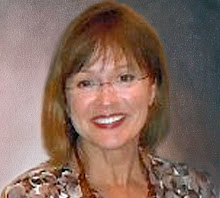
I am starting a new painting: a large (22" x 30" canvas) close-up of a herring gull. It is from a photo I took with my cell phone camera while I was walking along Stage Harbor last week. I have taken quite a few photos of these guys and my interest in them grows with each image. I caught this one standing at the waters edge... but as I started the sketch, I decided it would be a better composition if I put him deeper into the water a bit to capture some reflection of his legs and belly. So, the full-size painting will make the gull larger than life... an opportunity to work the detail of his eye and the texture of the feathers.
I created this sketch using oil pastels on a 9" x 12" canvas board which I pre-wet with medium (Galkyd Lite). I have never had instruction on using oil pastels, since (so far) I have only used them for preliminary sketches. Basically, I use the oil pastels straight out of the box, applying them like soft pastels. I use them "dry", drawing in the subject and applying local color, then modifying the local color with other hues scumbled on top. Then I dip a brush in turpenoid and gently "wash" over this oil pastel drawing to fill in the flecks of white and reduce or remove the "crayon" look.
I have found that the turpenoid is great for removing the oiliness of the top layer which, by the way, can remain undried for months! When I wash it with turpenoid, it dries "harder" somehow - and, of course, quicker. I have ruined some sketches by scrubbing too hard at a passage with the turp... killing the color. But a light coat, immediately blotted up, leaves the canvas board drier and ready for additional pigment, which stays true.
Another property of this medium that surprised me is that it appears to remain soluble in turpenoid forever! I may be exaggerating, but, compared to oil paint, where the only way changes can be made once a passage dries is to paint over it anew, no matter how much time has elapsed, it seems I can always scrub back into an oil pastel sketch with solvent. I find this really helpful, since I often only come to a conclusion about where I want to take my sketch after gazing it at for weeks.
This time, as I say, I laid in a layer of galkyd lite, then rubbed the oil pastel into the moistened canvas board. I am not sure what this will do to the seemingly endless solubility factor... but what I liked about it was that there was less of a "crayon" look right from the start; also, I was able to keep the color application thin for most of the image... then as I dabbed and moved the paint around, I achieved what I think is a nice, painterly effect.
Until very recently, I never viewed my sketches as anything more than part of the planning for a painting. Frankly, I am not a disciplined planner at all. So often I launch right into an underpainting with no sketch or even thumbnail. I think I pay for that impulsiveness in the amount of rework I tend to do on the final painting. Even when I do plan, I have rarely gone beyond a charcoal drawing, focusing on resolving the compositional and value issues. I have found full color sketches helpful when I am painting something for which I have no visual reference. For example, my painting Companions II was an image that popped into my head. If I ever saw anything that stimulated that image in my mind, I did not recall it. So, to work out how I wanted to put the painting together, I needed more than just a value drawing.
When I have used full color sketches, I have discarded them as I would a thumbnail. In the course of our recent move to Cape Cod, though, I found that there were several oil pastel sketches "in process", so they got packed and shipped with all the other art materials. Once I unpacked, I placed these sketches around the studio... and lo and behold, I find a couple of them appealing. They are far more spontaneous and painterly than most of my finished works... and I like that.
This recognition has made me decide to treat these little bozzettos with honor. I will use them not just to work out the most obvious color and placement issues in a composition, but to capture the spirit of what moved me to paint the subject in the first place. Perhaps this will help me retain the freshness, energy and painterly qualities I strive for in my finished work.








